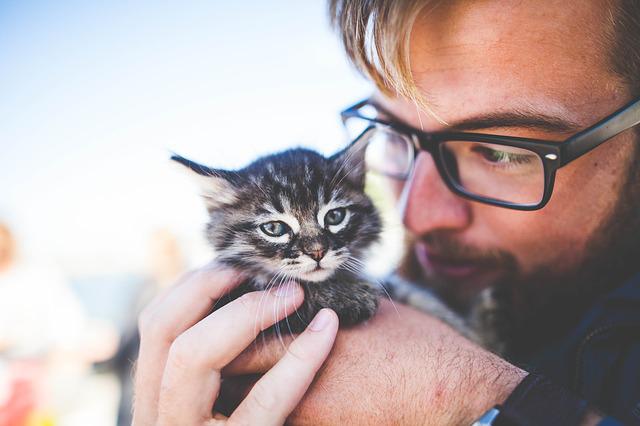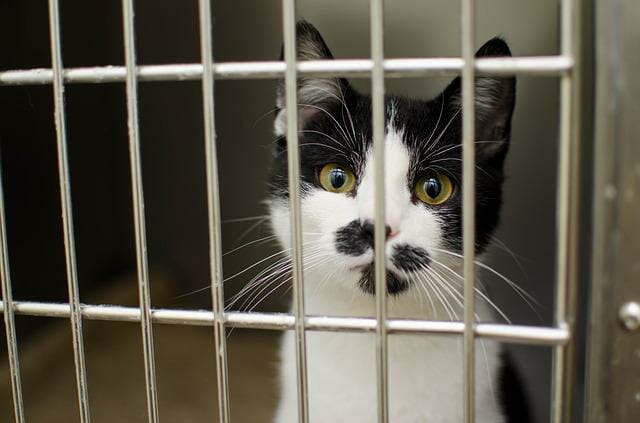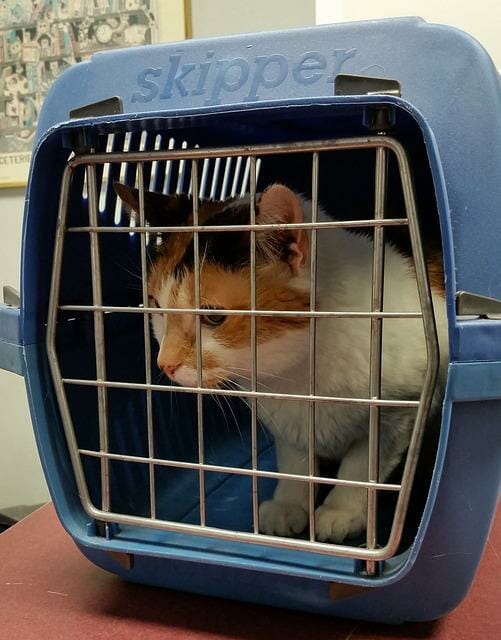Can You Fly With a Cat: What You Need to Know When Flying With a Cat
Yes, you can fly with a cat, but there are certain requirements and considerations that you should keep in mind before traveling with your feline companion. First, it’s important to check with the airline you plan to use to determine their policies and requirements for traveling with pets. Many airlines have specific rules regarding the size and type of carrier that can be used, as well as requirements.


Table of Contents
Reminders When Booking a Flight With a Cat
Check the Airline’s Pet Policy
When booking a flight with a cat, it’s important to check the airline’s pet policy to ensure that you understand their rules and regulations for traveling with pets. According to the VCA Animal Hospital, some airlines allow pets to travel in the cabin with their owners, while others require them to travel in the cargo hold. If you want to keep your cat with you during the flight, ensure the airline allows pets in the cabin.
Most airlines have specific size and weight restrictions for pet carriers. Make sure your carrier meets these requirements before booking your flight. Some airlines charge additional fees for traveling with a pet, which can vary depending on the airline and the type of travel (domestic or international). Ensure you understand any fees for traveling with your cat before booking your flight.
Depending on the airline and your destination, you may need to provide certain documentation, such as a health certificate, for your cat. Make sure you understand any documentation requirements and have all necessary paperwork in order before your flight.
Some airlines restrict the types of pets that can travel on their planes. For example, certain breeds of dogs may not be allowed, or airlines may not allow exotic pets. Ensure you understand any breeds and species restrictions before booking your flight.
Choose the Right Carrier
Choosing the right carrier for your cat is an important part of preparing for air travel with your pet. Different airlines have different requirements for pet carriers, so it’s important to make sure the carrier you choose is approved by your airline. Check your airline’s pet policy for size and weight restrictions and any other requirements for pet carriers.
The carrier should be large enough for your cat to stand up, turn around, and lie comfortably. Choosing a carrier that meets your airline’s size requirements is also important, as carriers that are too large may not be allowed on board. A good pet carrier should have plenty of ventilation to ensure your cat can breathe easily during the flight. Look for carriers with mesh or other breathable materials.


Your pet carrier should be sturdy enough to withstand the rigors of air travel, including bumps and jolts. Look for carriers with strong, durable construction and secure latches to prevent your cat from escaping during the flight.
Schedule a Visit With Your Veterinarian
Before booking a flight with your cat, you must schedule a visit with your veterinarian to ensure your cat is healthy enough to travel and up-to-date on all necessary vaccinations. In addition, your veterinarian can perform a physical examination to ensure your cat is healthy enough to travel. This is especially important if your cat has any pre-existing medical conditions.
Different destinations may have different vaccination requirements, so ensuring your cat is up-to-date on all necessary vaccinations before traveling is important. In addition, your veterinarian can provide a vaccination record and advise you on any additional vaccinations necessary for your travel destination.
Discuss any concerns you have about your cat’s behavior during travel. For example, suppose you’re concerned about your cat’s behavior during travel, such as anxiety or motion sickness. In that case, your veterinarian can provide advice and recommendations on how to help your cat stay calm and comfortable during the flight.
If your cat is particularly anxious or nervous during travel, your veterinarian may recommend sedation to help keep your cat calm. It’s important to discuss the risks and benefits of sedation with your veterinarian, as well as any precautions you should take before and after administering sedatives.
Obtain the Necessary Documentation
When traveling with a cat by air, it’s important to obtain all necessary documentation required by the airline and your destination. Some airlines and countries require a health certificate from a licensed veterinarian stating that your cat is healthy and free of infectious diseases. Check with your airline and destination country to see if a health certificate is required and if there are any specific requirements for the certificate.
Ensure you have a current record of your cat’s vaccinations, as some airlines and countries may require proof of certain vaccinations. Ensure your cat has identification tags with your contact information in case your pet gets lost during travel.
If you’re traveling internationally with your cat, you may need to obtain import/export permits from your destination country’s government. Some countries may require that your cat have a microchip for identification purposes. Make sure to have documentation for the microchip.
Make Sure Your Cat Is Comfortable
Ensuring your cat is comfortable during air travel is important for a safe and stress-free trip. It’s important to introduce your cat to the carrier before the flight. This will make your cat familiar with the carrier and feel more comfortable during the flight.
Bring your cat’s favorite bedding and toys to help make the carrier feel more familiar and comfortable. Make sure to provide your cat with water and food during the flight. Some carriers have built-in water dishes or pockets for treats, but you can also bring your own.
Ensure that your cat is not overheating during the flight. If the airline allows it, you can bring a small battery-powered fan or place a small ice pack in the carrier. Talking to your cat in a soothing tone can help keep your cat calm and relaxed during the flight. You can use synthetic pheromones to help calm your cat during the flight. These pheromones can come in sprays or diffusers that emit a calming scent.
Arrive Early


It’s important to arrive at the airport early when traveling with a cat by air. Checking in with a pet can take longer than usual, so arriving early gives you ample time to complete the check-in process without feeling rushed or stressed.
Security screening procedures may take longer when traveling with a pet, as the carrier may need to be screened separately. Arriving early allows you enough time to go through security without worrying about missing your flight.
Before boarding your flight, you must take your cat to a designated pet relief area to allow them to use the restroom. Arriving early gives you enough time to locate these areas and take your cat for a quick break.
Once you’ve boarded the plane, you’ll need to get your cat settled in their carrier and ensure they have everything they need to be comfortable during the flight. Arriving early gives you enough time to get settled before takeoff.
Traveling with a pet can come with unexpected issues, such as flight delays or last-minute changes to your itinerary. Arriving early gives you enough time to deal with these issues without feeling rushed or stressed.
